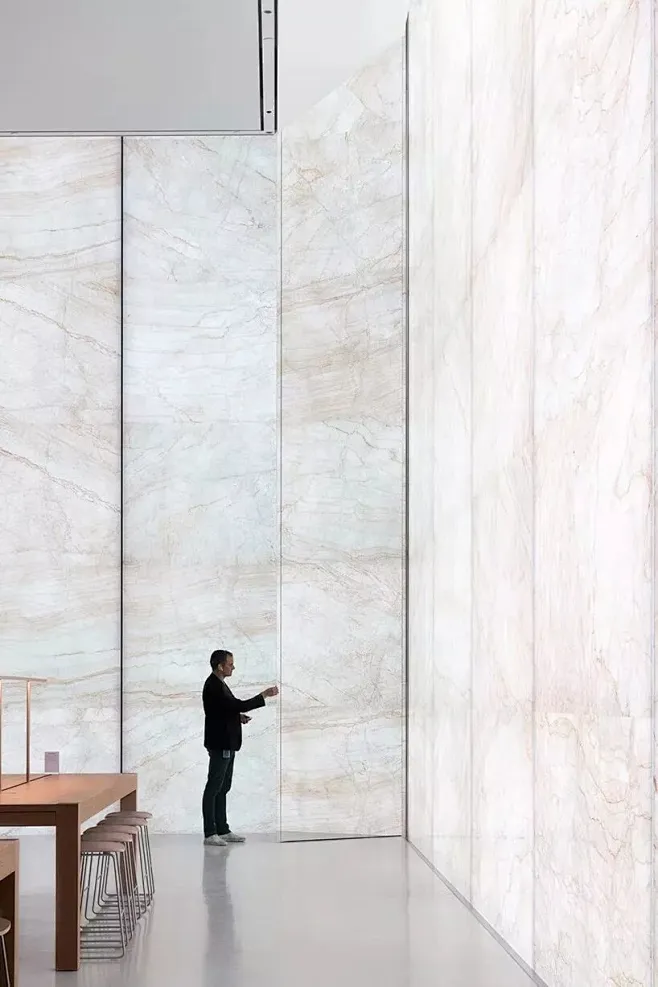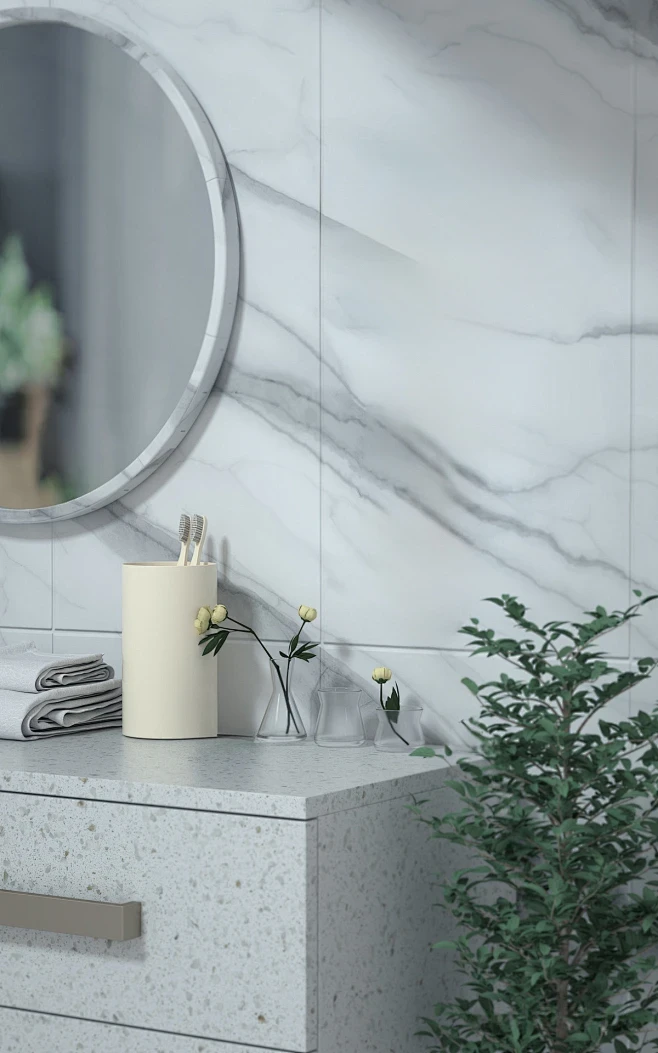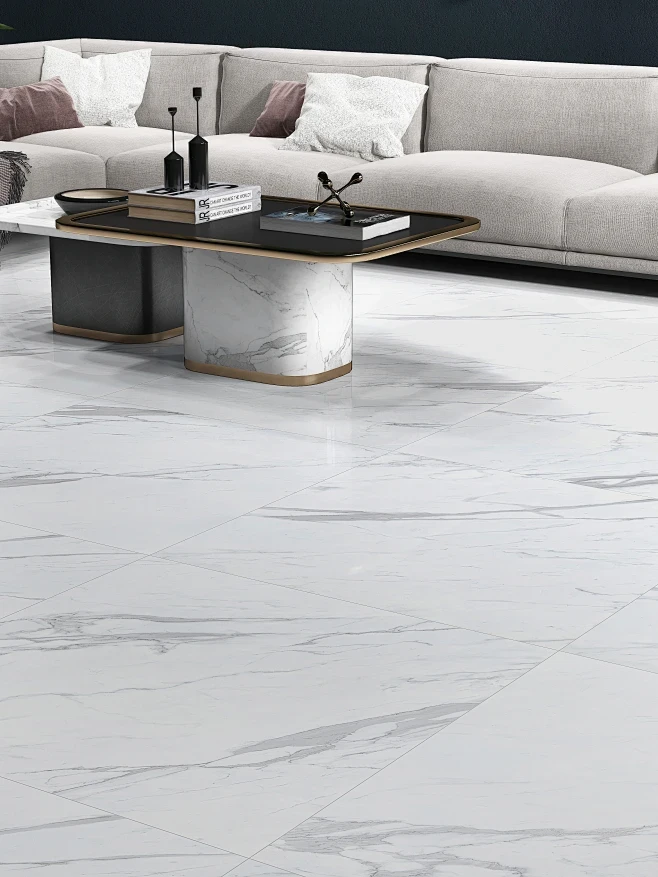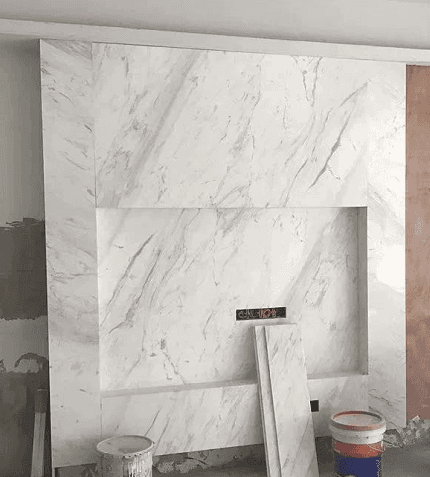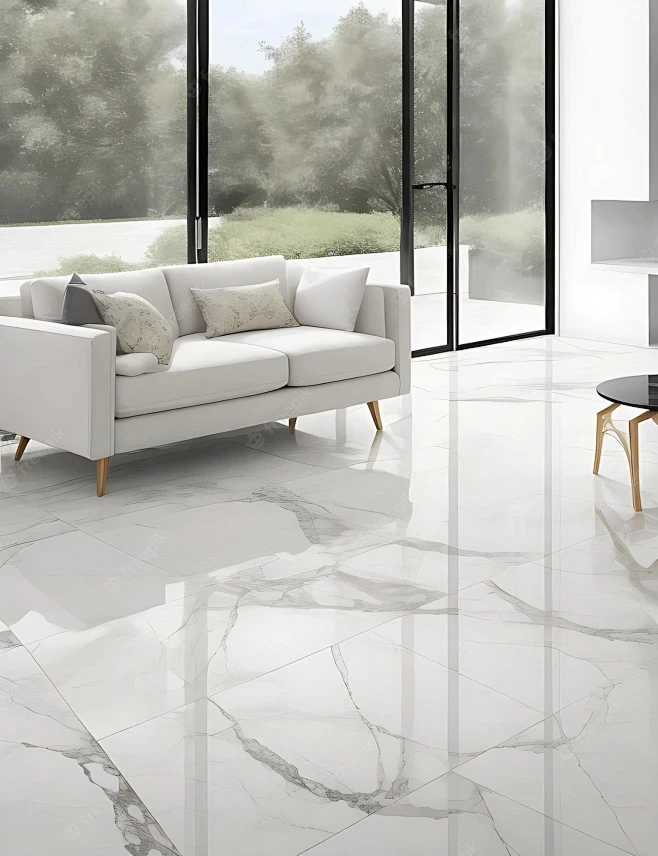Understanding and Preventing Yellowing in White Marble: A Comprehensive Guide
Yuki
Among the vast array of marbles, white marble is undoubtedly one of the most widely used stones. It graces high-end, luxurious walls, floors, feature walls, staircases, countertops, and more. The creativity with white marble knows no bounds, with applications ranging from clothing, light bulbs, fruit dishes, amplifiers, to even toilets. The simple elegance, noble temperament, and delicate softness of white marble are truly captivating, and its decorative effects are nothing short of exceptional—it's simply fantastic. Its gentle hues, reminiscent of pure, snow-covered landscapes, are beautifully pure and allow many designers to fully utilize and showcase its beauty.
However, it is also a variety that is both loved and feared. The delicate, fragile nature of white marble in terms of stain resistance and maintenance has led to some users regretting their choice, especially considering the fact that white marble is prone to yellowing, which keeps many admirers at bay.
To address the quality issues such as yellowing in white marble, we must analyze both internal and external factors, thoroughly understanding the properties of marble and the root causes of quality issues to solve the problem fundamentally. So, what causes white marble to yellow, and how can it maintain its original appearance? Here are some tips!
The Stone's Own Structure and Composition
Research using scanning electron microscopy on the surfaces of the most common white marbles has found that both on the surface and within the veins, there are iron minerals with particle sizes ranging from 2 microns to several hundred microns. Some are distributed on the surface of the slab, while others are concentrated in the veins.
The presence of iron minerals in white marble, which are subject to oxidation, is considered the main cause of marble yellowing. Since most marbles have a uniform pattern except for the veined parts, when the randomly dispersed iron-containing minerals in the marble are oxidized to form yellow or brown hydrated iron oxides, they create blemishes and aesthetic stains on the slab surface, a phenomenon particularly prominent in white marble.
In white marble, iron primarily exists in the form of iron sulfide, carbonate iron, and ferrous magnesium silicate, with these iron minerals dispersed within the marble matrix or concentrated in the marble veins.
When these divalent iron minerals on the stone surface are oxidized by oxygen in the air to trivalent iron and combine with water to form hydrated iron hydroxide, we get what is commonly referred to as rust, or "spitting yellow." Without any protective measures, this yellowing phenomenon in marble can occur within 8-12 months after installation.
Interestingly, marble placed next to heat sources, such as hot water pipes, does not exhibit this yellowing phenomenon, indicating a close relationship between the yellowing of white marble and moisture. However, contact with water does not necessarily lead to yellowing in white marble.
Thermal shock tests on white marble have shown that when stone samples are immersed in deionized water at 15-25°C for 6 hours and then baked in an oven at 100-110°C for 18 hours, only samples with high iron content on the surface show a slight yellowing after 20 such cycles, significantly less than natural yellowing.
This experimental phenomenon indicates that due to the very low conductivity of deionized water, the oxidation-reduction reaction of divalent iron being oxidized to trivalent iron proceeds very slowly. Therefore, although the samples are immersed in water for a long time and go through multiple cycles, there is no significant yellowing phenomenon.
This test result indicates that the yellowing phenomenon of white marble is the result of the combined action of oxidation and hydration on divalent iron minerals on the stone surface, and neither of these conditions can be absent. Unlike soaking in deionized water, soaking white marble in alkaline solutions is very likely to cause yellowing.
When the same stone samples are immersed in alkaline water at 15-25°C for 6 hours and then baked in an oven at 50-60°C for 18 hours, after 20 such cycles, the experiment found that all the white marbles tested turned yellow, with Carrara marble being the most severe.
Alkaline solutions easily cause white marble to yellow because, in an alkaline medium, the oxidation-reduction potential of divalent iron being oxidized to trivalent iron is reduced, making it easily oxidized to trivalent iron by oxygen in the air, and the combination of trivalent iron with water forms yellow pollution on the slab surface.
The solubility of hydrated iron hydroxide formed by the oxidation of divalent iron in the air and its combination with water on the stone surface is extremely low. Therefore, the yellow pollution caused by iron on the slab surface is not easy to remove. The second type of yellow pollution on the surface of white marble comes from organic substances within the marble, which are similar in structure to humic substances and exist during the formation of the marble.
These water-soluble organic substances within the marble often appear brownish-yellow when reacting with alkaline water. Due to the presence of these organic substances inside the marble, marble floors or wall panels that have not undergone back waterproof treatment can react with the alkaline water of the cement slurry during wet installation, generating colored products. When these colored products are carried by water to the stone surface, they form the second type of pollution on the stone surface.
Even after the stone is installed, due to climatic reasons, when water permeates through cement concrete and then seeps out through the stone surface, it always carries colored organic pollutants to the stone surface.
II. External Causes
The two types of pollution in white marble mentioned above both come from the internal composition and structure of the stone and occur under the influence of external conditions. In addition to these two types of pollution related to the stone composition and structure, there are several other sources of external pollution:
Yellowing caused by wear As the polished surface of the marble wears, dirt is brought into the fine pores of the marble surface with foot traffic, causing the white marble surface to turn yellow.
Yellowing caused by incorrect care The most common incorrect care is to wet drag the floor with a dirty mop. The dirt brought by the dirty mop accumulates inside the marble, causing the marble surface to become polluted and turn yellow.
Yellowing caused by waxing When wax is commonly used to polish the marble surface, the thick layer of wax turns yellow due to its own aging.
Yellowing caused by crystalline surface treatment The steel wool used in crystalline surface treatment leaves tiny powder residues in the micropores of the polished marble slab, becoming the root of yellowing, especially when the crystalline surface treatment is carried out in a humid state, yellowing is more likely to occur.
Yellowing caused by the installation process
The yellowing caused by installation is easily overlooked but is widespread.
Before the installation of marble floors or walls, although the stone specification slabs are subjected to the so-called six-sided waterproof treatment: the bottom is treated with waterproof back glue, and the four sides and front are treated with penetrating waterproof agents.
If such six-sided waterproof treatment is done very well and the quality of the selected waterproof materials is also guaranteed, theoretically, there should be no more yellowing phenomena related to water. However, the reality is that even if the six-sided waterproof treatment of the stone slab surface before installation is considered to be done well, the yellowing phenomenon of the slab surface still occurs from time to time.
Stone yellowing related to installation
It is mainly caused by two aspects: one is that due to the installation size requirements, on-site cutting is required, which destroys the original waterproof treatment of a certain side; the other possible situation is that the construction environment is dirty and chaotic, and during the construction process, cement slurry falls on the slab surface. To prevent the fallen cement slurry from drying on the slab surface, a wet towel is used to wipe the fallen cement slurry. At this time, it is very likely that the strong alkaline cement water will be wiped into some hidden cracks of the slab surface, because even if the slab surface has been treated with penetrating waterproof agents, the tiny waterproof agent molecules cannot form a protective film across the cracks to shield and protect the cracks.
Therefore, the coverage of the waterproof agent at the crack is very limited. During installation, using a putty knife to scrape back and forth on the side of the specification slab that is stuck with cement slurry will also destroy the waterproof treatment that has been done. If you accidentally bring cement water into the slab surface cracks when wiping the slab surface, then the slab surface turning yellow is a matter of time rather than whether it will turn yellow or not.
III. Prevention of Yellowing in White Marble
To prevent quality issues such as yellowing in white marble, the following points should be noted during processing and installation to allow white marble to perfectly present the beauty of decoration.
Since the yellowing caused by the internal composition and structure of marble is caused by external conditions, this external condition is water and oxygen in the air. Therefore, as long as water is effectively prevented from passing through the interior of the stone, the yellowing caused by the stone composition and structure will be effectively inhibited.
An effective means of preventing water from passing through the interior of the stone is to treat the back of the slab with a waterproof agent before installation.
The early waterproof treatment for the back of stone slabs was to brush with siloxane/silane penetrating waterproof agents. It has been proven that brushing the back of the slab with this waterproof agent cannot effectively inhibit the occurrence of stone diseases, including yellowing
